CR2032 Battery: Benefits, Pinout and Datasheet
BATTERY LITHIUM 3V COIN 20MM
Hello, everyone! Today I will introduce you a kind of battery: CR2032. It is a lithium manganese dioxide battery. This article mainly introduce its benefits, pinout, datasheet and other detailed information about Panasonicbsg CR2032.

How to Measure a CR2032 Coin cell battery (#006)
CR2032 Description
The CR2032 is a 3 volt lithium coin cell battery that powers many of most popular devices.
These little batteries are known to be able to withstand a range of temperatures and has been operable in temperatures from -30°C to 85°C.
In most cases under normal circumstances, these batteries last for 3-5 years.
Their compact design makes them suitable for some of the slimmest of sensors. CR2032 batteries are a type of non-rechargeable lithium coin or “button” cell battery.
The CR2032 battery has a voltage of up to 3 volts and a capacity of up to 240mAh. The CR2032 is the most common lithium cell battery in the world. The battery CR2032 is also known as BR2332, BR2032, DL2032, EA2032C, ECR2032, L2032, LF1/2V, LM2032, CR2032, CR2332, 2032, 5004LC, AWI L14,RFA-35 and Seiko SB-T15.
CR2032 Pinout

CR2032 CAD Model
Symbol

Footprint

CR2032 Features
• Good pulse capability
• High discharge characteristics
• Stable voltage level during discharge
• Long-term reliability
• Nominal Voltage: 3.0 Volts
• Maximum Current: 0.19A
• Non - Rechargeable Disposal battery
• Typical Capacity: 240 mAh @ 20°C 15kΩ Load
• Service Life: ~720 Hrs @20°C 15kΩ Load
• Typical Weight: 3.0 grams (0.10 oz.)
• Operating Temp: -30C to 60C
• Self-Discharge: ~1% / year
Specifications
- TypeParameter
- Factory Lead Time22 Weeks
- Mount
In electronic components, the term "Mount" typically refers to the method or process of physically attaching or fixing a component onto a circuit board or other electronic device. This can involve soldering, adhesive bonding, or other techniques to secure the component in place. The mounting process is crucial for ensuring proper electrical connections and mechanical stability within the electronic system. Different components may have specific mounting requirements based on their size, shape, and function, and manufacturers provide guidelines for proper mounting procedures to ensure optimal performance and reliability of the electronic device.
External - Material
In electronic components, the parameter "Material" refers to the substance or material used in the construction of the component. The choice of material is crucial as it directly impacts the component's performance, durability, and other characteristics. Different materials have varying properties such as conductivity, resistance to heat, corrosion resistance, and mechanical strength, which determine how the component functions in a circuit. Common materials used in electronic components include metals like copper and aluminum, semiconductors like silicon, insulators like ceramics and plastics, and various alloys. Selecting the appropriate material is essential for designing reliable and efficient electronic components.
Lithium - Weight3.1g
- Series
In electronic components, the "Series" refers to a group of products that share similar characteristics, designs, or functionalities, often produced by the same manufacturer. These components within a series typically have common specifications but may vary in terms of voltage, power, or packaging to meet different application needs. The series name helps identify and differentiate between various product lines within a manufacturer's catalog.
CR2032 - Published2006
- Size / Dimension
In electronic components, the parameter "Size / Dimension" refers to the physical dimensions of the component, such as its length, width, and height. These dimensions are crucial for determining how the component will fit into a circuit or system, as well as for ensuring compatibility with other components and the overall design requirements. The size of a component can also impact its performance characteristics, thermal properties, and overall functionality within a given application. Engineers and designers must carefully consider the size and dimensions of electronic components to ensure proper integration and functionality within their designs.
0.79Dia x 0.13 H 20.0mmx3.2mm - Part Status
Parts can have many statuses as they progress through the configuration, analysis, review, and approval stages.
Active - Moisture Sensitivity Level (MSL)
Moisture Sensitivity Level (MSL) is a standardized rating that indicates the susceptibility of electronic components, particularly semiconductors, to moisture-induced damage during storage and the soldering process, defining the allowable exposure time to ambient conditions before they require special handling or baking to prevent failures
1 (Unlimited) - Max Operating Temperature
The Maximum Operating Temperature is the maximum body temperature at which the thermistor is designed to operate for extended periods of time with acceptable stability of its electrical characteristics.
60°C - Min Operating Temperature
The "Min Operating Temperature" parameter in electronic components refers to the lowest temperature at which the component is designed to operate effectively and reliably. This parameter is crucial for ensuring the proper functioning and longevity of the component, as operating below this temperature may lead to performance issues or even damage. Manufacturers specify the minimum operating temperature to provide guidance to users on the environmental conditions in which the component can safely operate. It is important to adhere to this parameter to prevent malfunctions and ensure the overall reliability of the electronic system.
-30°C - HTS Code
HTS (Harmonized Tariff Schedule) codes are product classification codes between 8-1 digits. The first six digits are an HS code, and the countries of import assign the subsequent digits to provide additional classification. U.S. HTS codes are 1 digits and are administered by the U.S. International Trade Commission.
8506.80.00.00 - Voltage - Rated DC
Voltage - Rated DC is a parameter that specifies the maximum direct current (DC) voltage that an electronic component can safely handle without being damaged. This rating is crucial for ensuring the proper functioning and longevity of the component in a circuit. Exceeding the rated DC voltage can lead to overheating, breakdown, or even permanent damage to the component. It is important to carefully consider this parameter when designing or selecting components for a circuit to prevent any potential issues related to voltage overload.
3V - Termination Style
"Termination style" in electronic components refers to the method used to connect the component to a circuit board or other electronic devices. It determines how the component's leads or terminals are designed for soldering or mounting onto the circuit board. Common termination styles include through-hole, surface mount, and wire lead terminations.Through-hole components have leads that are inserted through holes in the circuit board and soldered on the other side. Surface mount components have flat terminals that are soldered directly onto the surface of the circuit board. Wire lead terminations involve attaching wires to the component for connection.The choice of termination style depends on factors such as the type of component, the manufacturing process, and the space available on the circuit board. Different termination styles offer various advantages in terms of ease of assembly, reliability, and space efficiency in electronic designs.
Requires Holder - Approval Agency
The parameter "Approval Agency" in electronic components refers to the organization responsible for testing and certifying that a component meets specific safety, quality, and performance standards. These agencies evaluate products to ensure compliance with industry regulations and standards, providing assurance to manufacturers and consumers. Approval from recognized agencies can enhance a component's marketability and acceptance in various applications, particularly in sectors like automotive, aerospace, and healthcare. Common approval agencies include Underwriters Laboratories (UL), International Electrotechnical Commission (IEC), and the American National Standards Institute (ANSI).
UL - Output Voltage
Output voltage is a crucial parameter in electronic components that refers to the voltage level produced by the component as a result of its operation. It represents the electrical potential difference between the output terminal of the component and a reference point, typically ground. The output voltage is a key factor in determining the performance and functionality of the component, as it dictates the level of voltage that will be delivered to the connected circuit or load. It is often specified in datasheets and technical specifications to ensure compatibility and proper functioning within a given system.
3V - Voltage
Voltage is a measure of the electric potential difference between two points in an electrical circuit. It is typically represented by the symbol "V" and is measured in volts. Voltage is a crucial parameter in electronic components as it determines the flow of electric current through a circuit. It is responsible for driving the movement of electrons from one point to another, providing the energy needed for electronic devices to function properly. In summary, voltage is a fundamental concept in electronics that plays a key role in the operation and performance of electronic components.
3V - Terminal Type
Terminal type or emulation specifies how your computer and the host computer to which you are connected exchange information.
BUTTON - Battery Chemistry
A battery is a device that stores chemical energy, and converts it to electricity. This is known as electrochemistry and the system that underpins a battery is called an electrochemical cell. A battery can be made up of one or several (like in Volta's original pile) electrochemical cells.
Lithium Manganese Dioxide - Number of Cells1
- Battery Cell Size
The most common lithium-ion cell is the 18650 (the numbers define the physical dimensions and shape as follows: 18mm in diameter, 65mm long and the 0 means it has a round cross-section) which is due to its widespread use in laptop battery packs.
Coin 20.0mm - Capacity
In electronic components, "Capacity" typically refers to the maximum amount of electrical charge that a component can store. It is measured in units called farads (F). Capacitors are the most common components that have a capacity rating. The capacity of a capacitor determines how much energy it can store and release when connected in a circuit. Higher capacity capacitors can store more charge and are often used in applications requiring larger energy storage or filtering capabilities. It is important to select a capacitor with the appropriate capacity to ensure proper functioning of the circuit.
225mAh - Discharge Rate
The "Discharge Rate" in electronic components refers to the rate at which a component can release stored energy or power. This parameter is particularly important in devices that use batteries or capacitors, as it determines how quickly these components can discharge their stored energy. A high discharge rate means that the component can release energy quickly, while a low discharge rate indicates a slower release of energy. Understanding the discharge rate of electronic components is crucial for designing circuits and systems that require specific power delivery characteristics.
200μA - Battery Type
Battery type refers to the specific chemistry and design of a battery that determines its characteristics, performance, and applications. Common battery types include alkaline, lithium-ion, nickel-metal hydride, and lead-acid, each with unique properties such as voltage, capacity, energy density, and discharge rates. The choice of battery type affects factors such as longevity, rechargeability, and suitability for various electronic devices and systems. Understanding battery type is crucial for selecting the appropriate power source for specific electronic components and applications.
PRIMARY - Diameter
In electronic components, the parameter "Diameter" typically refers to the measurement of the width of a circular component, such as a resistor, capacitor, or inductor. It is a crucial dimension that helps determine the physical size and fit of the component within a circuit or on a circuit board. The diameter is usually measured in millimeters (mm) or inches (in) and is important for ensuring proper placement and soldering of the component during assembly. Understanding the diameter of electronic components is essential for selecting the right size for a specific application and ensuring compatibility with other components and the overall design of the circuit.
20mm - Height3.2mm
- Radiation Hardening
Radiation hardening is the process of making electronic components and circuits resistant to damage or malfunction caused by high levels of ionizing radiation, especially for environments in outer space (especially beyond the low Earth orbit), around nuclear reactors and particle accelerators, or during nuclear accidents or nuclear warfare.
No - RoHS Status
RoHS means “Restriction of Certain Hazardous Substances” in the “Hazardous Substances Directive” in electrical and electronic equipment.
Non-RoHS Compliant - Lead Free
Lead Free is a term used to describe electronic components that do not contain lead as part of their composition. Lead is a toxic material that can have harmful effects on human health and the environment, so the electronics industry has been moving towards lead-free components to reduce these risks. Lead-free components are typically made using alternative materials such as silver, copper, and tin. Manufacturers must comply with regulations such as the Restriction of Hazardous Substances (RoHS) directive to ensure that their products are lead-free and environmentally friendly.
Lead Free
CR2032 Benifits
1. Good pulse and high discharge rate performance
2. Wide operating temperature range
3. Stable discharge voltage
4. No passivation
5. Long operating life and shelf life
6. Self-discharge rate less than 3% per year at 20°C
7. Excellent safety at hermetically sealed case
8. Ability to provide a variety of welded termination tabs for all cell types.
How to use CR2032?
There are many application of coin cell batteries, the below circuit shows you that how to connect a CR2032 coin cell battery with a simple LED circuit. CR2032 provide a nominal voltage of 3.0V, to power up a simple LED we need a minimum voltage of 2.2V so we have used the resistance for protection or current limiting.

CR2032 Applications
●Key fob for cars.
●Wireless doorbell for house.
●CMOS battery in computers.
●Glucometers
●Digital altimeter
●Cyclocomputers
●Heart rate monitors
●Tensiometers and clinical thermometers
●Harzardous environment monitoring
●Temperature and humidity monitor
●Electronic access controls
●RFID/checking devices
●loT(internet of things)
●Memory back-up
●Digital watches
●Car keys
●Laser pens
●Fitness appliances
CR2032 Dimensions

CR2032 Safety Warnings
●Do not insert batterys in reverse
●Do not charge batterys
●Keep batterys out of reach of children
●When handling lithium batterys, care must be exercised
CR2032 Manufacturer
Panasonic Industrial Devices Sales Company of America is the industrial components and electronic devices division of Panasonic Corporation of North America. Panasonic Industrial Devices Sales Company of America provides key components that power the home appliances, consumer electronics, computers, communications, and commercial and healthcare products used by millions of people each day. Our wide offering of high-quality industrial products, global manufacturing, and advanced research and development facilities as well as our commitment to customer service make us a preferred vendor to the world's most famous original equipment manufacturers of high-tech electronic products. From the smallest resistor to the highest technology wireless communications modules, Panasonic offers it all! Choosing Panasonic means more than selecting a name you know and trust. It means choosing the best quality components the industry can offer.
Trend Analysis
Datasheet PDF
- Datasheets :
- MSDS Material Safety Datasheet :
1.What is the difference between CR2016 and CR2032 button batteries?
First, the thickness of the battery is different, and the battery card position is different. 1. The thickness of the CR2016 battery is 1.6mm. 2. The thickness of the CR2032 battery is 3.2mm. Second, the capacity is different to adapt to the different requirements of electronic products for battery capacity. (1). The nominal capacity of CR2016 battery is 75mAh (2). The nominal capacity of CR2032 battery is 200-240mAh.
2.What does the number on the CR2032 button battery mean?
CR2032 battery is a 3V button lithium manganese battery, CR stands for the international IEC number of button lithium manganese battery, 20 represents the diameter of this battery is 20mm, and 32 represents the thickness of this battery is 3.2mm. The nominal voltage is 3.0V , The rated capacity is 220mAh.
3.How much larger capacity of CR2032 battery than CR1625 battery?
Both batteries are lithium manganese batteries, button type, voltage is 3V, CR2032 battery capacity is 200-230mah, CR1625 battery capacity is 75-90mah, the difference between the two battery capacity is quite large, more than doubled, so CR2032 battery It is also much later than the CR1625 battery, about twice as much.
4.What is the shelf life of CR2032 battery?
Panasonic CR2032 button battery, with a shelf life of 5 years.
5.Can the CR2032 battery on the motherboard be turned on after it is completely discharged?
The battery CR2030 on the motherboard can usually be turned on after it is completely discharged, but you need to press the F1 key to enter the system normally when turning on the computer. And the time of the computer system will return to the factory setting time after booting.
6.How do I know that the button battery CR2032 is exhausted?
Measure the battery voltage with a multimeter. If it is lower than 2.2V, it means the battery is about to be exhausted. The normal voltage should be slightly higher than 3V, the maximum pulse discharge current is 12mA, and the continuous discharge current is less than or equal to 4mA.
7.What does the double mark on the Panasonic CR2032 battery mean?
It means: Keep away from children Remind adults and children to stay away from button batteries, small toys at home, and batteries on the remote control. Do not let the children accidentally swallow them. If swallowed accidentally, the electrolyte inside the battery will cause the fluid in the body to corrode the battery shell and cause the electrolyte in the battery. Leakage, a chemical reaction occurs in the body, causing internal organs to burn, corrode, erosify and even perforate.
8.Can cr2032 button battery and CR3025 be used in common?
The difference between CR2032 and CR2025 is the size and capacity of the battery. If the product has no special requirements, it can be universal. It's just a matter of the length of time it takes. CR2032 has a capacity of 210mah, CR2025 has a capacity of 150mah, and the voltage is 3V.
9.How to remove the CR2032 battery?
Generally, the battery is above 1V. This battery does not need to be replaced actively. When the motherboard prompts that the CMOS battery is dead, you can basically replace it.
10.How to judge the positive and negative poles of CR2032 button battery?
The flat side is positive and the other side is negative.
 Microchip PIC16LF18856TIMV Microcontroller: In-depth Technical Analysis
Microchip PIC16LF18856TIMV Microcontroller: In-depth Technical Analysis29 February 202470
 A Comprehensive Guide to LTC7880IUKG#TRPBF DC/DC Switching Controller
A Comprehensive Guide to LTC7880IUKG#TRPBF DC/DC Switching Controller06 March 2024265
 cr2 vs cr123:Which battery do you prefer?
cr2 vs cr123:Which battery do you prefer?29 March 202224709
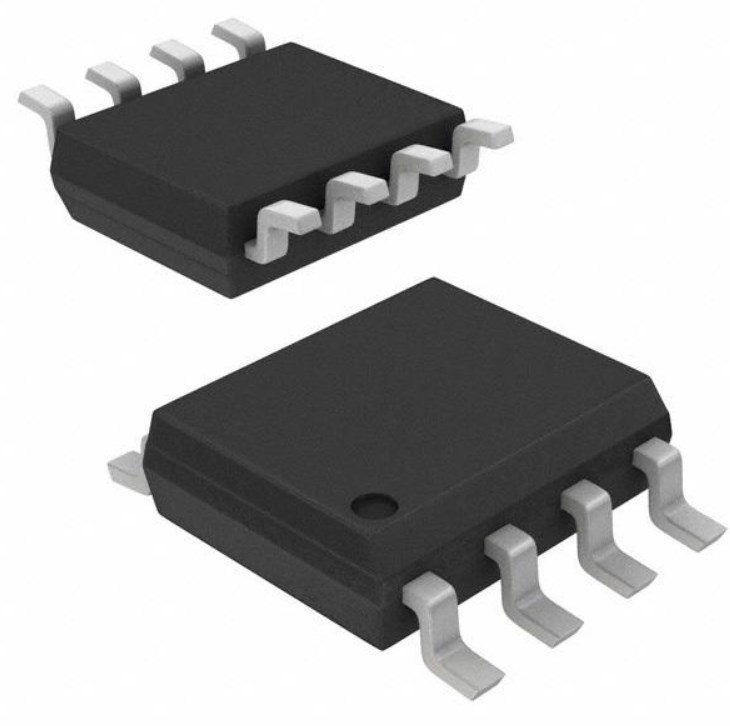 LM2903M: Pinout, Datasheet, Comparators
LM2903M: Pinout, Datasheet, Comparators16 March 20221847
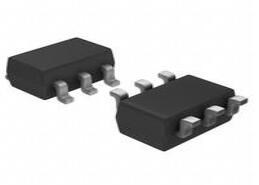 AOZ1282CI 1.2A Simple Buck Regulator, AOZ1282CI Datasheet and Replacements
AOZ1282CI 1.2A Simple Buck Regulator, AOZ1282CI Datasheet and Replacements10 February 20221945
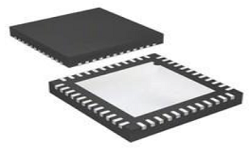 STSPIN32F0 BLDC Controller: Features, Applications and Datasheet
STSPIN32F0 BLDC Controller: Features, Applications and Datasheet20 November 20231189
 DS1693 RTC: Datasheet, Pinout, Features
DS1693 RTC: Datasheet, Pinout, Features31 August 2021434
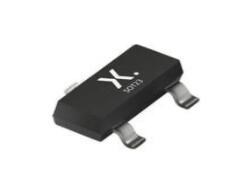 MMBTA92 PNP High-Voltage Transistor: SOT-23, MMBTA92 Datasheet PDF
MMBTA92 PNP High-Voltage Transistor: SOT-23, MMBTA92 Datasheet PDF08 February 20221508
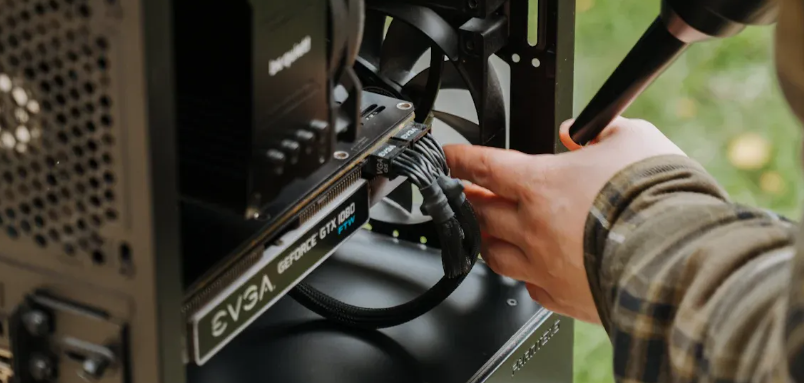 How Proper Thermal Management Extends the Life of Your Electronics
How Proper Thermal Management Extends the Life of Your Electronics18 July 2025476
 Comprehensive Analysis of Switching Power Supply Circuits
Comprehensive Analysis of Switching Power Supply Circuits30 November 20218453
 Comprehensive Introduction to Snapdragon 888
Comprehensive Introduction to Snapdragon 88828 June 202110671
 Multivibrator: Circuits, Types and Application
Multivibrator: Circuits, Types and Application08 September 202023590
 What are Motherboards?
What are Motherboards?23 June 20215644
 Increasing the Efficiency through Wide-Bandgap Semiconductors (SiC & GaN)
Increasing the Efficiency through Wide-Bandgap Semiconductors (SiC & GaN)24 October 20221076
 How to Choose MOSFET for Switching Power Supply?
How to Choose MOSFET for Switching Power Supply?02 March 20228072
 LED Driver: Function, Types, and Application
LED Driver: Function, Types, and Application01 September 202012325
Panasonic - BSG
In Stock
United States
China
Canada
Japan
Russia
Germany
United Kingdom
Singapore
Italy
Hong Kong(China)
Taiwan(China)
France
Korea
Mexico
Netherlands
Malaysia
Austria
Spain
Switzerland
Poland
Thailand
Vietnam
India
United Arab Emirates
Afghanistan
Åland Islands
Albania
Algeria
American Samoa
Andorra
Angola
Anguilla
Antigua & Barbuda
Argentina
Armenia
Aruba
Australia
Azerbaijan
Bahamas
Bahrain
Bangladesh
Barbados
Belarus
Belgium
Belize
Benin
Bermuda
Bhutan
Bolivia
Bonaire, Sint Eustatius and Saba
Bosnia & Herzegovina
Botswana
Brazil
British Indian Ocean Territory
British Virgin Islands
Brunei
Bulgaria
Burkina Faso
Burundi
Cabo Verde
Cambodia
Cameroon
Cayman Islands
Central African Republic
Chad
Chile
Christmas Island
Cocos (Keeling) Islands
Colombia
Comoros
Congo
Congo (DRC)
Cook Islands
Costa Rica
Côte d’Ivoire
Croatia
Cuba
Curaçao
Cyprus
Czechia
Denmark
Djibouti
Dominica
Dominican Republic
Ecuador
Egypt
El Salvador
Equatorial Guinea
Eritrea
Estonia
Eswatini
Ethiopia
Falkland Islands
Faroe Islands
Fiji
Finland
French Guiana
French Polynesia
Gabon
Gambia
Georgia
Ghana
Gibraltar
Greece
Greenland
Grenada
Guadeloupe
Guam
Guatemala
Guernsey
Guinea
Guinea-Bissau
Guyana
Haiti
Honduras
Hungary
Iceland
Indonesia
Iran
Iraq
Ireland
Isle of Man
Israel
Jamaica
Jersey
Jordan
Kazakhstan
Kenya
Kiribati
Kosovo
Kuwait
Kyrgyzstan
Laos
Latvia
Lebanon
Lesotho
Liberia
Libya
Liechtenstein
Lithuania
Luxembourg
Macao(China)
Madagascar
Malawi
Maldives
Mali
Malta
Marshall Islands
Martinique
Mauritania
Mauritius
Mayotte
Micronesia
Moldova
Monaco
Mongolia
Montenegro
Montserrat
Morocco
Mozambique
Myanmar
Namibia
Nauru
Nepal
New Caledonia
New Zealand
Nicaragua
Niger
Nigeria
Niue
Norfolk Island
North Korea
North Macedonia
Northern Mariana Islands
Norway
Oman
Pakistan
Palau
Palestinian Authority
Panama
Papua New Guinea
Paraguay
Peru
Philippines
Pitcairn Islands
Portugal
Puerto Rico
Qatar
Réunion
Romania
Rwanda
Samoa
San Marino
São Tomé & Príncipe
Saudi Arabia
Senegal
Serbia
Seychelles
Sierra Leone
Sint Maarten
Slovakia
Slovenia
Solomon Islands
Somalia
South Africa
South Sudan
Sri Lanka
St Helena, Ascension, Tristan da Cunha
St. Barthélemy
St. Kitts & Nevis
St. Lucia
St. Martin
St. Pierre & Miquelon
St. Vincent & Grenadines
Sudan
Suriname
Svalbard & Jan Mayen
Sweden
Syria
Tajikistan
Tanzania
Timor-Leste
Togo
Tokelau
Tonga
Trinidad & Tobago
Tunisia
Turkey
Turkmenistan
Turks & Caicos Islands
Tuvalu
U.S. Outlying Islands
U.S. Virgin Islands
Uganda
Ukraine
Uruguay
Uzbekistan
Vanuatu
Vatican City
Venezuela
Wallis & Futuna
Yemen
Zambia
Zimbabwe




















